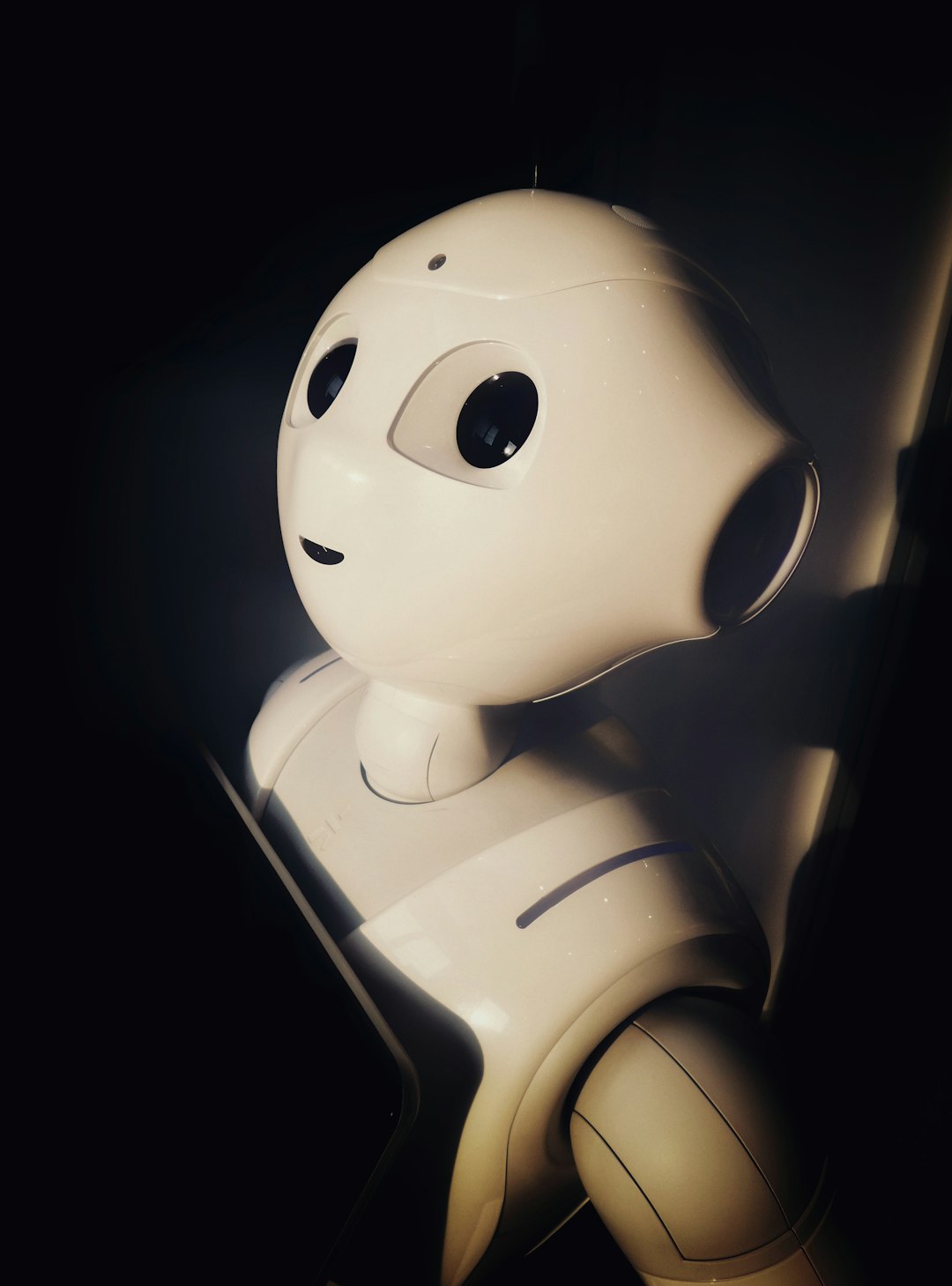Table of Contents
- Introduction
- Understanding AI Content and Google’s Guidelines
- The Evolution of Content Creation: From Traditional to AI-powered Tools
- Exploring AI Content Generators and Their Role in Copywriting
- Google’s Stance on AI-generated Content: Fact vs. Fiction
- AI-powered Plugins and SaaS Tools: Streamlining Content Automation
- Navigating Auto-blogging and AI Content Writers on WordPress
- Optimizing AI-generated Content: Best Practices for Search Engines
- Automated Workflows and Their Impact on SEO
- Conclusion
- Frequently Asked Questions
Introduction
In the fast-paced world of digital content, the emergence of artificial intelligence (AI) has revolutionized how we create and consume information. As AI-powered tools become increasingly sophisticated, content creators are harnessing these innovations to generate articles, reports, and even entire books with remarkable speed and efficiency. However, a question looms large for those working on the cutting edge of technology and creativity: Does Google penalize AI-generated content?
Amidst an ecosystem where search engine visibility is paramount, understanding how AI-generated content is perceived by Google’s algorithms could have significant implications for SEO strategies. Are there hidden penalties lurking for AI-authored pieces, or does well-crafted content, regardless of its origin, stand an equal chance of reaching the top of search results? This article delves into these burning questions, decoding the myths and realities surrounding Google’s treatment of AI-created content. Join us as we embark on this exploration, unraveling the mystery that could redefine the future of digital content creation.
Understanding AI Content and Google’s Guidelines
In the ever-spinning carousel of digital content, AI-generated material has become quite the hot potato. Google, the grand poobah of search engines, has laid down some guidelines to make sure quality doesn’t take a backseat. Folks often wonder if Big G has a bone to pick with AI content. Well, it’s not exactly cut and dried.
Imagine an AI writing like an enthusiastic apprentice, eager to please but sometimes missing the mark. Google’s not against AI content per se, but it raises an eyebrow when the quality’s about as flat as a pancake. Google’s algorithms are like diligent gardeners, constantly weeding out content that doesn’t sprout useful information or seems like it’s been spun by a cat chasing its tail.
Ah, but don’t fret; Google’s guidelines are the lighthouse in the dense fog of content creation. They suggest crafting content that’s as meaningful as a well-loved book, relevant, and engaging to its lighthouse-seeking audience. It’s like setting a sumptuous table; if the AI can whip up a feast that humans find palatable, then those search engine deities will nod with approval.
The Evolution of Content Creation: From Traditional to AI-powered Tools
Once upon a time, in a world where quills danced on parchment and typewriters clattered away like impatient squirrels, content creation was a slow yet steady race. Writers, armed with cups of joe and determination, weaved words like a spider spins its web—carefully and meticulously. Fast forward, and here we are, zooming ahead at the speed of light with AI-powered tools at our fingertips, making content creation a whole new ball game.
The journey from ink-stained fingers to algorithms wasn’t an overnight trip. It took years, during which technology whispered promises of automation and ease into the ears of creators. Ironically, while some feared losing their creative spark, these AI tools weren’t out to steal their thunder. Instead, they offered a helping hand, analyzing patterns like seasoned detectives and painting ideas with the stroke of digital brushes.
With AI in the mix, content creation feels like watching a fireworks display—breathtaking and unpredictable. Yes, it’s a brave new world, where creativity meets technology in a dazzling dance, forever changing how we narrate our tales.
Exploring AI Content Generators and Their Role in Copywriting
Imagine a world where words flow like rivers, each sentence crafted with precision and pizzazz by a digital scribe. Well, hold onto your hats, ’cause AI content generators are doing just that. They’re the new kids on the block in copywriting, shaking things up like a dog with a new bone. By using algorithms and patterns, these digital whiz-kids churn out text that’s both efficient and engaging, leaving us mere mortals wondering if we’ll be out of a job!
First off, AI brings speed to the table, like a cheetah chasing its prey. Need a thousand-word article before your coffee gets cold? No problem! AI’s got your back. And while it’s all fun and games, there’s a sprinkle of irony here—machines, once seen as cold and mechanical, are now the poets of our age, crafting content with a touch of whimsy. But hey, let’s not get ahead of ourselves, for there’s still a human touch required, much like the seasoning in a perfect stew. While AI dishes out the basics like a master chef, the real flavor comes from the human touch, mixing in creativity and heart.
For copywriters, AI isn’t just a tool; it’s another paintbrush to craft masterpieces. It’s like having a trusty sidekick, ready to leap into action, helping craft compelling narratives while you catch the bad guys—or grammar errors, rather.
Google’s Stance on AI-generated Content: Fact vs. Fiction
Ah, the age-old myth: Google swings its mighty algorithm hammer and crushes AI-generated content to dust. But, hold your horses! While many folks believe this tale, the reality’s got a twist. Google’s not out to get AI content. In fact, it’s got a rather diplomatic stance. The search giant’s concern is more about quality than how the content came to be. It’s like a chef who doesn’t mind where the ingredients are from, as long as the dish tastes divine.
Remember the story of the tortoise and the hare? The tortoise’s slow and steady quality often beats the hare’s speedy, sloppy attempt. Similarly, Google’s algorithms keep an eye out for content that’s not only original but also packed with value. As John Mueller himself once chimed in, the spotlight’s on expertise and helpfulness.
Now, between you, me, and the goalpost, Google’s goalposts aren’t moving on quality. They want you to give users something to chew on, like a juicy apple that’s crisp and satisfying. After all, content that’s spammy or lacks substance, whether human or AI-crafted, might just find itself sinking in the quicksand of lower rankings. So, rather than worrying about the ‘who,’ focus on the ‘what’ and ‘how.’ Quality content rules the roost, even in an AI-driven landscape.
AI-powered Plugins and SaaS Tools: Streamlining Content Automation
Once upon a digital dawn, where bytes bustle and codes chatter, AI-powered plugins and SaaS tools emerged as the unsung heroes of content creation. Picture this: your content calendar is as demanding as a diva at a karaoke night. Enter the stage, these AI whizzes, spinning content quicker than you can say ‘abracadabra.’
For instance, take an eager writer loaded with caffeine and creativity, yet bogged down by the clock—the relentless tick-tock reminding them of looming deadlines. Here, AI tools swoop in, not as a threat but a trusty sidekick. These tools morph content generation from a task to a breeze, ensuring every piece is polished with precision and pizzazz.
Seamlessly, these innovations weave into the digital fabric, transforming mundane tasks into mesmerizing performances. It’s like having a diligent elf working tirelessly, ensuring that your blog doesn’t just float but sails gracefully across the vast sea of information. With these tools, content creators are no longer tangled in trivialities but freed to focus on creativity. So, the question isn’t whether to use these tools but how soon you can start reaping the benefits and letting creativity soar unshackled.
Navigating Auto-blogging and AI Content Writers on WordPress
Navigating the world of auto-blogging and AI content writers on WordPress can feel like you’re steering a ship through uncharted waters; you’re not quite sure what’s lurking beneath the surface. Trust me, in a digital ocean filled with sharks of misinformation, you don’t want to be caught with your oars out of the water. It’s like inviting a robot to tell a bedtime story to a bunch of kids, and hoping they’ll nod off to sleep. No offense to our metallic friends, but they lack a certain, shall we say, je ne sais quoi. But hey, rolling with AI doesn’t have to leave you high and dry. WordPress plugins offer a treasure trove of tools that let you tweak and tune your content before it goes live. It’s like giving your work a coat of polish so it shines like a lighthouse during a storm, guiding you safely to the shores of credibility. However, keep in mind the irony – while automation might save you time, authentic content requires a human touch to resonate. Auto-blogging might sound like the goose that lays golden eggs, but without oversight, you’re at risk of ending up with a wild goose chase instead.
Optimizing AI-generated Content: Best Practices for Search Engines
Optimizing AI-generated content for search engines is like navigating a maze filled with twists and turns—exciting but tricky. You don’t want to end up in a digital dead-end. First off, embrace quality over quantity; after all, if content were king, quality would be its crown. Ensuring your content is relevant and valuable to users can save your virtual skin. Oh, and let’s not forget authenticity. Authentic content that’s engaging, rather like a conversation with an old friend, can enthrall and retain your audience.
Next, consider integrating natural language; AI might sometimes seem like it’s speaking in tongues. Making your content sound like it’s been lovingly penned by a human hand adds a touch of realism. Transition words help, too—they’re the breadcrumbs in your content journey, guiding readers along. Structure also plays a pivotal role; think of it as the foundation of a skyscraper, keeping everything in place for a seamless user experience.
Finally, SEO best practices are your compass here—keywords, meta tags, and alt text lead the way. Keep an eye on analytics for a peek into your audience’s soul. After all, search engines are like wise hermits that appreciate well-crafted wisdom and shun blatant trickery.
Automated Workflows and Their Impact on SEO
In the fast-paced world of SEO, automated workflows have emerged as the new kids on the block, strutting with a promise to lighten the load. Like busy bees buzzing in a virtual hive, these workflows blend seamlessly into the humdrum of digital life, tackling tasks with the efficiency of a seasoned marathoner.
Imagine a diligent assistant who never sleeps, tirelessly optimizing content, monitoring keyword rankings, and even keeping an eye on competitors. That’s the magic of automation! But, oh, here’s the rub — Google’s ever-watchful eye isn’t bedeviled by machines alone. It’s all about the balance. Like a tightrope walker balancing gracefully, there’s a need for human touch and creativity to accompany these mechanical marvels.
Some folks say, “Let the computer handle it,” but relying solely on automated processes can be more trouble than it’s worth. You see, in a world where content needs a heart, too much reliance on these workflows can lead to soulless content devoid of engagement, a curious irony in a quest for higher rankings. Picture this: a symphony can’t play itself; it needs a maestro to infuse emotion into every note. Similarly, SEO needs creativity and strategy to dance hand-in-hand with automation, crafting an unforgettable melody in the digital ether.
Conclusion
In the rapidly evolving landscape of digital content, harnessing AI-generated tools is no longer a luxury—it’s a necessity. As we’ve delved into Google’s stance and the nuances of AI in content creation, it’s clear that while quality is key, leveraging cutting-edge tools empowers creators to fulfill these requirements efficiently. One such essential ally is WPHorde. Without leveraging platforms like WPHorde, content creators risk being outpaced in the digital race, missing out on the seamless integration and optimization that AI tools offer. With WPHorde, unlock the power of AI to create, optimize, and ascend the search engine rankings. Don’t be left behind—integrate WPHorde into your digital strategy today!

















